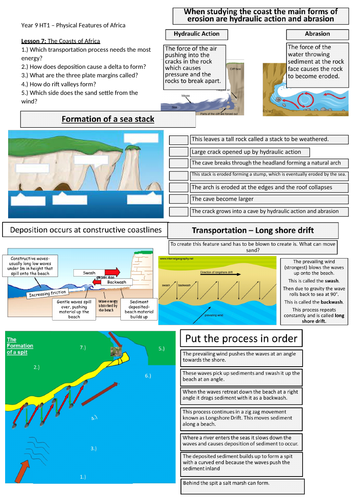


Students will start by recapping hydraulic action and abrasion then identify features using aerial photography of headlands and bays. Students then recap the types of weathering that is present and then describe the formation of a sea stack. Finally students will learn about the formation of a spit and using terms such as longshore drift, swash and backwash they will attempt at explaining its formation.
Starter: Knowledge Retention of previous learning
Task 1: Using aerial photography identify the feature on the African coast
Task 2: Describe the types of weathering present along the coast
Task 3: Explain the formation of a sea stack.
Task 4: Describe the location of features of a spit.
Task 5: Describe the formation of a spit.
Task 6: Plenary: Recap of home learning expectation.
Lesson contains one powerpoint and one worksheet.
Something went wrong, please try again later.
This resource hasn't been reviewed yet
To ensure quality for our reviews, only customers who have purchased this resource can review it
Report this resourceto let us know if it violates our terms and conditions.
Our customer service team will review your report and will be in touch.